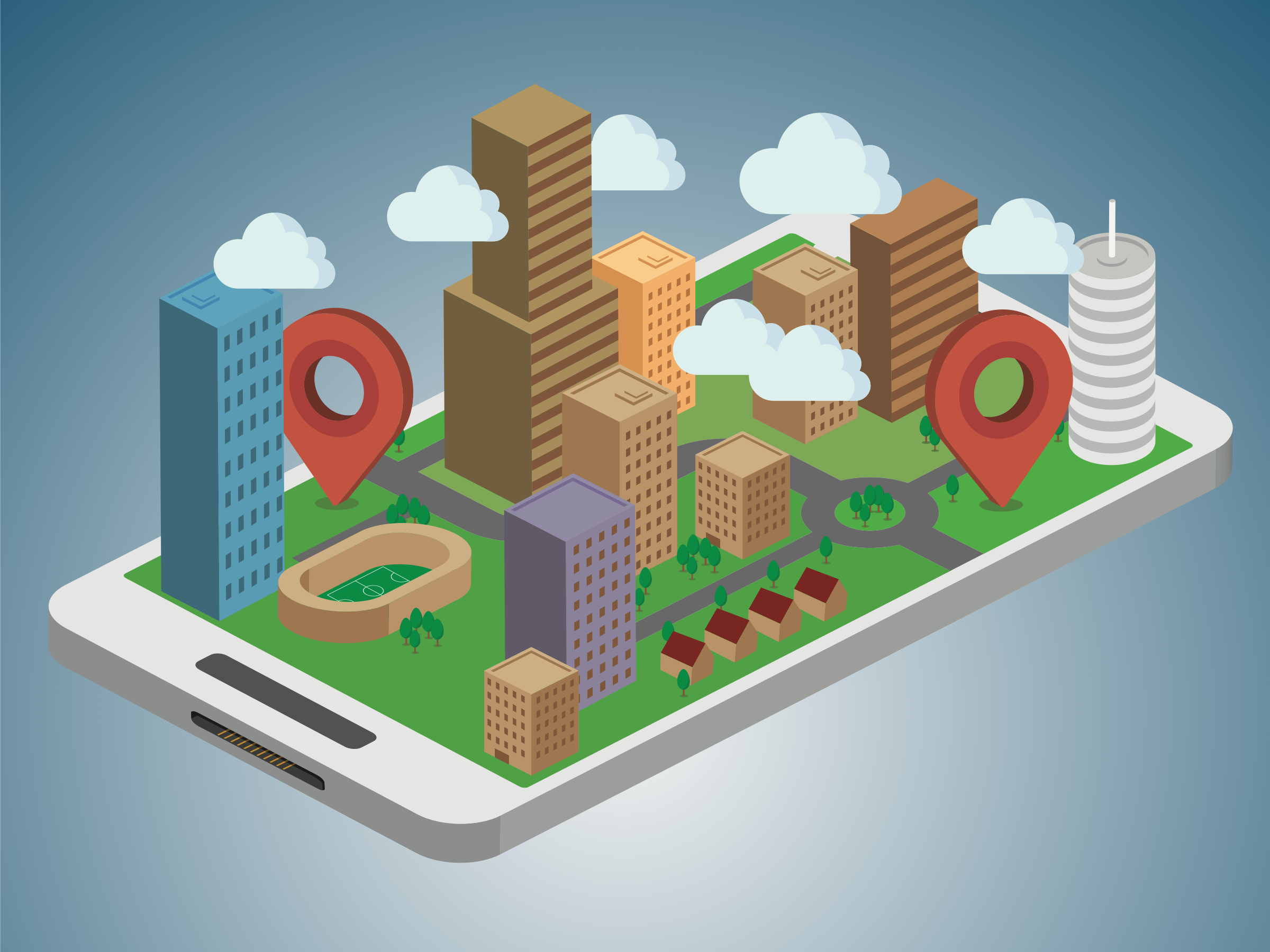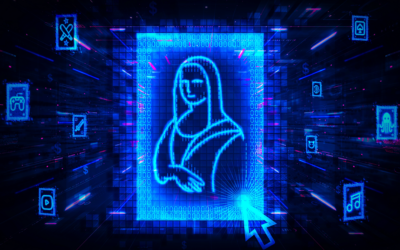Table of Content
- From Raw Data to Business Action
- Geofencing App Development: From Signal to Action
- Key Decisions in Geofencing Architecture
- Optimizing for Location Precision and Energy Efficiency
- On-Device vs. Server-Side Logic Considerations
- Accelerating Geofencing Development with Managed Services (like AWS)
- Features of an Enterprise-Grade Geofencing Platform
- Why Krasamo is the Right Technical Partner
- Let’s Architect Your Solution
Turn Location Data into Business Action—With a Proven Geofencing Partner
Leverage 15+ years of IoT expertise to build, deploy, and scale your geofencing solution.
Request a Free Project Consultation
From Raw Data to Business Action
Geofencing lets you define virtual boundaries around any location—and trigger automated actions the moment an asset crosses them. Whether you’re tracking a delivery fleet, automating smart-home routines, or running proximity marketing campaigns, a robust geofencing app drives efficiency, security, and new revenue opportunities.
But building a reliable, scalable, and battery-efficient geofencing app is more than just drawing a circle on a map. It requires deep expertise across the entire technology stack, from mobile device APIs and low-power IoT protocols to scalable cloud architecture.
On this page, we unpack the core components, discuss key architectural decisions, and introduce geofencing concepts to spark conversations with customers exploring geofencing app development.
Geofencing App Development: From Signal to Action
A successful geofencing solution is more than just the mobile app you see; it’s a carefully architected system of interconnected layers. From the device hardware that captures a location signal to the cloud service that triggers a business rule, every component must work in harmony.
At Krasamo, our approach to geofencing app development is to engineer solutions that orchestrate this entire stack, ensuring data flows efficiently from the physical world to your bottom line.
Layer 1: The Device & Signal
This layer forms the foundation of the entire system: the physical device and its ability to determine its location. We leverage the native location services built into operating systems (Apple’s Core Location and Android’s Fused Location Provider and geofencing APIs) as the foundation. These services intelligently blend signals from multiple hardware components to provide the best possible data:
- GPS: The gold standard for outdoor accuracy, essential for vehicle and asset tracking in open environments.
- Wi-Fi & Cellular Triangulation: A lower-power method for obtaining location estimates, crucial for conserving battery when high precision isn’t required.
- Bluetooth Beacons & RFID: The solution for indoor or dense environments where GPS fails. We use these for proximity-based triggers in warehouses, retail stores, and smart offices.
Our approach involves building a hybrid strategy, selecting the right signal for the right context and, most importantly, managing the user authorization required to access this data while respecting privacy and optimizing battery life.
Layer 2: The Data Transport
Once a device has a location coordinate, it must be transmitted securely and efficiently to your backend. For IoT and mobile applications, this requires a protocol that is both lightweight and reliable, especially on constrained networks or battery-powered devices.
- MQTT (Message Queuing Telemetry Transport): We leverage MQTT as our preferred protocol for most IoT geofencing solutions. Its publish/subscribe model is purpose-built for sending frequent, small packets of data (like coordinates) with minimal network overhead and low power consumption. This ensures real-time updates and bi-directional communication without draining device batteries.
Layer 3: The Cloud Backend & Logic
This is the engine of your geofencing app. The raw location data sent from the device is processed here against your defined business rules. At Krasamo, we can architect and deploy scalable cloud backends that can handle thousands or millions of devices.
AWS Location Service: We frequently build upon robust, enterprise-grade platforms like Amazon Location Service. This allows us to rapidly deploy a backend that can:
- Store and manage geofences: Define complex polygonal boundaries, not just simple circles.
- Evaluate events: Reliably determine when a device enters or exits any number of defined zones.
- Trigger actions: Execute business logic by invoking other AWS services (like Lambda functions) or calling third-party APIs to send notifications, update a CRM, or log an entry in a timesheet system.
This server-side approach provides the scalability, security, and flexibility needed for any serious commercial application.
Layer 4: The Map & Visualization
Finally, users and administrators need an intuitive way to see and interact with their assets and geofences. This layer provides the essential geographical context, transforming raw coordinates into actionable visual information.
- Native & Cloud-Based Maps: Depending on the project’s needs, we integrate rich map views using native mobile SDKs (Apple MapKit and Google Maps SDK for Android) or web SDKs from platforms like Amazon Location Service Maps. By leveraging data from specialized providers like Esri and HERE, we can overlay your asset locations, display geofence boundaries, show historical tracking data, and provide a seamless user experience for managing the entire system.
Key Decisions in Geofencing Architecture
Any development team can read the API documentation for a location service. True expertise, however, lies in understanding the critical trade-offs and making the right architectural decisions that determine a project’s success.
These are the hard problems where our deep expertise in IoT development becomes your project’s advantage. We don’t just build your app; we set your project up for success by helping you navigate these crucial choices.
Optimizing for Location Precision and Energy Efficiency
This is the central engineering challenge in any mobile geofencing application. Polling the GPS continuously provides maximum accuracy but will drain a smartphone battery faster than usual, leading to a poor user experience and app uninstalls. Conversely, infrequent polling saves battery but can miss critical geofence events.
How We Solve It: We reject this “either/or” choice by implementing an intelligent, adaptive polling strategy. Our solutions typically start with low-power monitoring using the OS’s significant-change location services. As a device’s reported location approaches a geofence boundary, the application logic dynamically increases the polling frequency for high-precision tracking.
Once the device is deep inside a zone or far away from any, it reverts to low-power mode. This hybrid approach delivers the accuracy you need, precisely when you need it, without sacrificing battery life.
On-Device vs. Server-Side Logic Considerations
Where should the backend of the geofence logic reside? Should the mobile app itself determine if it has crossed a boundary, or should it simply report its coordinates to a cloud server for evaluation? Each approach has significant implications for performance, scalability, and flexibility.
- On-Device Evaluation: Faster, provides immediate feedback, and can function offline with a GPS connection. However, it consumes more device resources and updating the logic or geofence definitions requires an app update.
- Server-Side Evaluation: Highly scalable, allows for complex rules involving multiple devices, and enables dynamic updates to geofences without touching the client app. However, it introduces latency and requires constant connectivity.
How We Solve It: The right answer depends entirely on your use case. For a smart home app that needs to turn on lights the moment you arrive, on-device logic is superior. For a fleet management platform tracking thousands of assets against a constantly changing set of delivery zones, a server-side architecture is the only viable path. We work with you to analyze your specific requirements and architect a solution—often a hybrid one—that optimally balances responsiveness, scalability, and maintainability.
Accelerating Geofencing Development with Managed Services (like AWS)
Building a proprietary, hyper-scale geofencing engine from the ground up is a massive undertaking, requiring specialized expertise in geospatial databases, distributed systems, and mapping infrastructure. For most companies, this is an expensive and unnecessary distraction from their core business.
How We Solve It: We are firm believers in leveraging the power of enterprise-grade, managed cloud services. Our expertise lies not in reinventing the wheel, but in being master integrators of platforms like AWS Location Service. By building on top of this powerful foundation, we provide our clients with a solution that is:
- Faster to Market: We focus on your unique business logic, not on building commodity infrastructure.
- More Cost-Effective: You benefit from Amazon’s massive economy of scale without the upfront capital expenditure and evaluate the tool with the free trial.
- Inherently Scalable & Reliable: Your application is built on the same battle-tested infrastructure used by global enterprises.
This “smart buy” approach allows us to deliver a superior, more robust product in a fraction of the time and cost of a fully custom-built solution.
Features of an Enterprise-Grade Geofencing Platform
A simple geofencing proof-of-concept is one thing; a scalable, enterprise-grade platform is another. A robust solution must provide administrators and developers with powerful tools to manage the system and integrate it into wider business operations. When we build a geofencing platform, we focus on delivering a core set of features designed for flexibility, control, and scale.
- Dynamic Zone Management via API
You need the ability to create, update, and delete geofences programmatically without redeploying your mobile app. We build solutions with a secure API endpoint that allows your backend systems to manage zones (both circles and complex polygons) on the fly, enabling use cases like dynamic delivery routing or event-specific area management. - Customizable Rules Engine
Business logic is rarely as simple as “inside or outside.” Our architectures support a rules engine that can trigger actions based on multiple conditions, such as time-of-day, device speed, duration within a zone, or the state of other connected systems. This allows for sophisticated automation, like flagging a driver who speeds within a school zone only during school hours. - Offline Operation & Event Caching
Mobile devices will inevitably lose connectivity. A resilient application must not lose data during these periods. We implement logic on the device to cache geofences and store entry/exit events locally when offline. Once connectivity is restored, the app automatically uploads the batched event history to the server with accurate timestamps. - Detailed Event Logging & Historical Playback
For auditing, analytics, and dispute resolution, a comprehensive event log is non-negotiable. Our backend systems are designed to log every geofence event with rich metadata (device ID, timestamp, coordinates, zone ID). We can then build features to visualize this data, such as a “breadcrumb trail” showing an asset’s historical path on a map. - Scalable User & Device Management
An enterprise solution requires granular control. We build systems with robust identity and access management to handle thousands of users and devices. This includes the ability to group devices, assign specific rules or permissions to different groups, and securely provision or de-provision assets from the platform. - Webhook & API Integrations
A geofencing platform provides the most value when it talks to your other business systems. We design our solutions with modern integration capabilities, primarily through webhooks and REST APIs. When a geofence event occurs, our system can push real-time data directly into your CRM, ERP, time-tracking software, or any other third-party platform.
Why Krasamo is the Right Technical Partner
Building a successful geofencing solution requires more than just knowing geofencing APIs; it demands the architectural expertise to know when a standalone mobile app is sufficient, and when the use case truly requires integration with an IoT ecosystem. We are not just app developers; we are end-to-end solution architects who design the right system for your needs.
Let’s Architect Your Solution
Ready to turn your concept into a scalable, enterprise-grade reality? Let’s have a technical discussion about your project goals and how we can build the right solution together.












I’m low-key obsessed with this post about building a geofencing app! 🤩
I love how you’ve listed out the various applications of geofencing! One thing worth mentioning is that these apps often rely on real-time location data, which can be quite a challenge to handle. Krasamo’s approach seems like a good starting point, but don’t forget about the importance of edge computing and data processing in making geofencing truly efficient. Geofencing apps have a lot of potential, but we need to think about scalability and latency as well.
I wholeheartedly concur with the author’s analysis on the efficacious integration of geofencing technologies, particularly in conjunction with geofencing apps. Beacons and MQTT protocols show immense potential for enhancing situational awareness. Excellent article!
I completely agree that geofencing is a game-changer in both personal and industrial applications! Its potential for automation and optimization is vast, especially when combined with AI-powered tools like Krasamo. Can’t wait to explore more use cases for geofencing apps!
This blog post is a game-changer for any mobile app development company! 🚀
Idk if I’m just not hyped about geofencing app dev anymore 🤷♂️ but kudos to Krasamo for highlighting the importance of scalable user mgmt and API integrations in mobile development and consulting. 👏
Idk if this is the most innovative approach to geofencing app dev, but it’s def on par with what I’d expect from a solid mobile development and consulting company. Solid implementation of webhook & API integrations tho! 👍
I’m underwhelmed by the discussion of IoT protocols, but it’s refreshing to see Krasamo pushing the envelope in mobile app development company innovation with their use of MQTT for geofencing apps. Still feels like a shallow analysis.